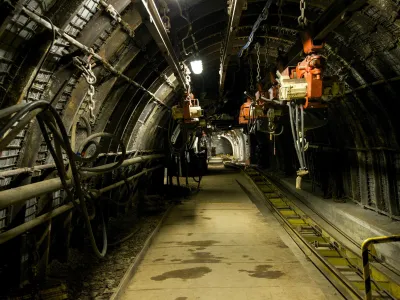Minnesota Power industrial demand response proposal would have massive cost, little to no benefit for consumers

Minnesota Power, which provides electricity in Duluth and parts of northeast and central Minnesota recently put forward a proposal for a new demand response program to the Public Utilities Commission (PUC) for approval. In this blog, I’ll take a look at what demand response is, why it can be an inexpensive and clean energy resource, and CUB’s concerns with the Minnesota Power proposal.
What is “demand response?”
There are multiple ways to get electricity when it’s needed. One way, of course, is power generation from a power plant, wind turbine, solar panel, or another generator. Another option is for customers to use less electricity during the hours when it’s in high demand and the most expensive to produce. “Demand response” programs compensate customers who reduce their energy usage during high-demand periods. (CUB has a more in-depth explanation of demand response here.) Instead of paying to produce electricity, a utility compensates customers to not use electricity at key times. Demand response makes financial sense when it costs less to compensate a customer to not use a unit of energy than it would cost to generate that same energy and deliver it to customers. CUB is in favor of demand response programs that provide benefits in the form of bill savings for all customers. Plus, demand response can help lower emissions. Every unit of energy that does not have to be produced at a coal or gas plant means fewer emissions released into the air. Demand response programs are used at periods when electricity demand is highest, and they generally displace less-efficient and higher-polluting plants that would be running at those times.
Minnesota Power’s proposal
Minnesota Power, together with the large industrial customers that make up a majority of the utility’s electricity usage, have put together a proposal in which the industries would provide demand response. Under this proposal, industrial customers altogether could provide up to 150 megawatts (MW) of demand response, which will be available for up to 600 hours each year. Each participating industrial customer would receive $30 per megawatt-hour (MWh) for reducing their electricity usage when called upon to do so. They would also receive a credit of $7,000 per month for each MW by which they pledged to reduce their electricity usage – whether or not they were called upon to reduce their usage that month. This $7,000/MW-Month credit works out to $126 million over 10 years – that is how much all customers would pay for this program to be available. As I said earlier, to make financial sense, a demand response program must be less expensive than it would be for the utility to generate and deliver that same amount of electricity. Minnesota Power’s demand response proposal falls short in multiple ways. First, the amount of savings customers see is not enough to justify paying the $126 million cost. Minnesota Power found that the demand response is $4.6 million cheaper than having a hypothetical power plant that is not currently needed to meet customer demand to provide the same amount of power. That means the utility is proposing to spend $126 million of customer money in order to save $4.6 million. This proposal is 11 times more expensive than their current demand response program. While their current demand response offering is not the same type of demand response, the utility has not justified why their new proposal requires collecting over 1000 percent more funds for a program, that may not even be needed to meet customer electricity needs. Furthermore, all customer costs collected would then be transferred directly to industrial customers. Additionally, Minnesota Power does not provide any assurances that this program will be used. The utility would be allowed to call upon demand response for up to 600 hours per year through this program, but there are no guarantees that the program would be used for any number of hours. If the program is used for the maximum 600 hours per year, Minnesota Power says that would provide an additional $1 million in savings each year, because of the energy that would no longer be used. However, if the demand response isn’t needed, that benefit would not materialize. What’s more, Minnesota Power just got approval to build a new gas power plant – making it even less likely that they will need additional power any time soon. Demand response can be an excellent energy resource. It’s a zero-emission way to meet electricity needs, and it can be very cost effective. Unfortunately, the current program on the table from Minnesota Power is not. This proposal places undue burden on residential and commercial customers for very little, if any, benefit. CUB has filed comments with the Public Utilities Commission in opposition to this proposal. However, we know that demand response is going to be a key part of the electricity picture in the future, and we look forward to seeing more reasonable proposals in the future.